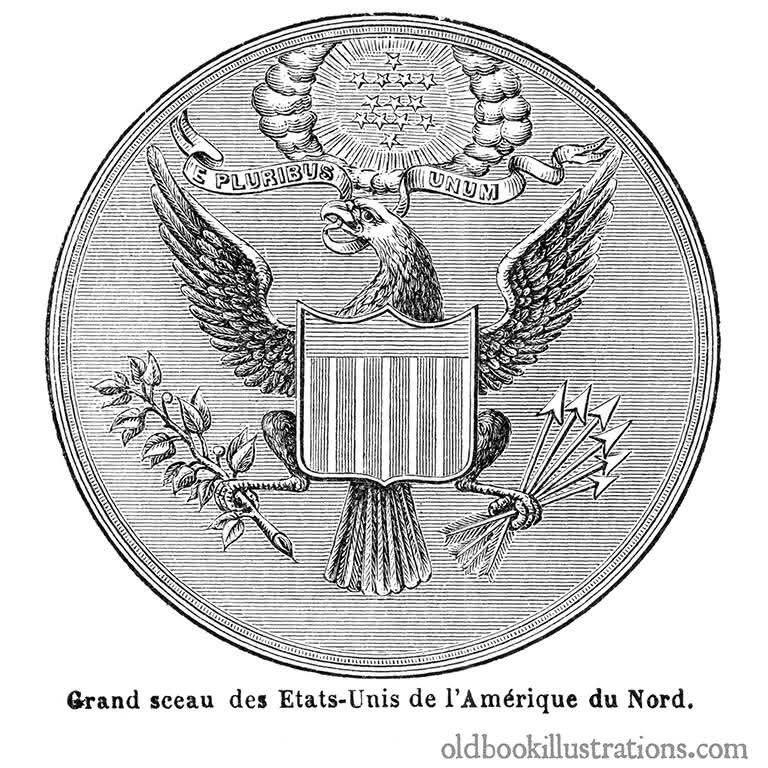In 1923, Mary Graham Bonner published 365 Bedtime Stories, a volume with one bedtime story for each day of the year. I am re-printing a number of the bedtime stories, focusing primarily on the stories with accompanying illustrations. The July 4 story fittingly focuses on Independence Day. I re-print the story, which consists of a father touting the virtues of the bald eagle to his child. After re-printing the story, I will discuss in brief the legend that Benjamin Franklin (see yesterday’s article about Franklin) once advocated for the turkey to be featured on the national seal instead of the bald eagle.
July 4: Independence Day (Bonner)
“The bird,” said daddy, “which has been chosen as the emblem of this country—the bald eagle—has very wonderful and amazing vision or eye-sight, which seems so particularly splendid.
“And doesn’t it seem fine to think that our national bird is not only so powerful and free and so much a part of the whole country—for his range is not limited to one part—but that he can see so far?
“For when our national bird can see so far surely it must make us try to see far ahead too and to see clearly and to see truly so that we can all do our best to march on along the paths set for us that July 4th, 1776, in Independence Hall, Philadelphia.”
Benjamin Franklin on the Bald Eagle vs the Turkey
There is a story that Benjamin Franklin (who I covered yesterday) once advocated for the turkey to be bird on America’s great seal instead of the bald eagle. This story is false to the extent that some people have portrayed Franklin as seriously advocating for the turkey over the eagle. However, Franklin did once make the case in jest in a private letter to his daughter. Smithsonian Magazine explained that the context behind the letter was Franklin’s opining that the design of the seal looked more like a turkey than a bald eagle.

He segued from that observation to a comparison of the two birds, explaining why the more moral and respectable turkey would have been the better choice. I re-print the passage courtesy of the Franklin Institute (archived):
For my own part I wish the Eagle had not been chosen the representative of our country. He is a bird of bad moral character. He does not get his Living honestly. You may have seen him perched on some dead tree near the river, where, too lazy to fish for himself, he watches the labor of the Fishing Hawk; and when that diligent Bird has at length taken a fish, and is bearing it to his nest for the support of his mate and young ones, the Eagle pursues him and takes it from him.
Benjamin Franklin
With all this injustice, he is never in good case but like those among men who live by sharping & robbing he is generally poor and often very lousy. Besides he is a rank coward: The little King Bird not bigger than a Sparrow attacks him boldly and drives him out of the district. He is therefore by no means a proper emblem for the brave and honest Cincinnati of America who have driven all the King birds from our country…
“I am on this account not displeased that the figure is not known as a Eagle, but looks more like a Turkey. For the truth the Turkey is in comparison a much more respectable bird, and withal a true original native of America . . . He is besides, though a little vain & silly, a bird of courage, and would not hesitate to attack a grenadier of the British Guards who should presume to invade his farm yard with a red coat on.
Franklin only wrote the above passage to his daughter. He clearly wrote it for fun rather than as a serious argument about the design of the national seal. While to say that Franklin called for the turkey to replace the eagle as our national bird would stretch what actually happened beyond recognition, the letter serves as a fine example of Franklin’s wit and sense of humor.